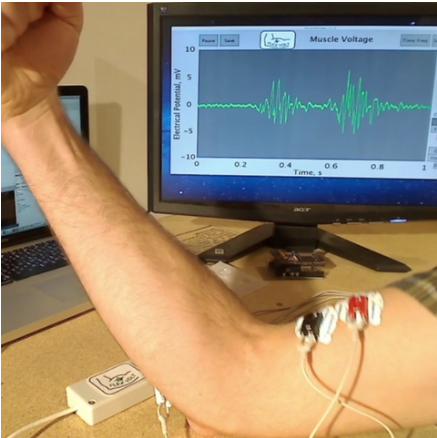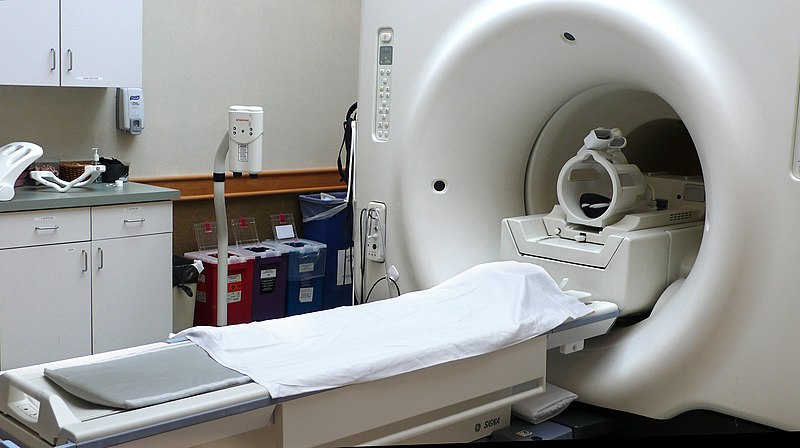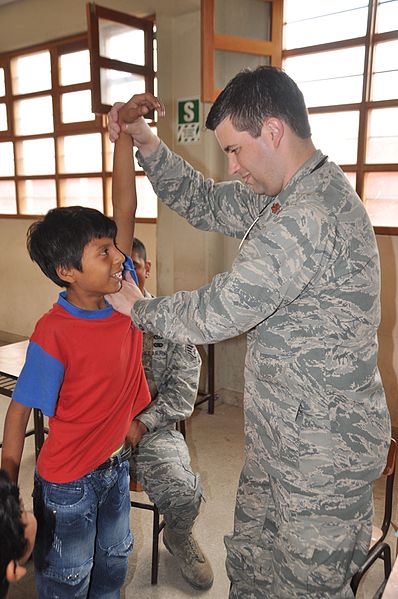14.7 Medical Specialists, Diagnostic Testing, and Procedures Related to Muscular System
Medical Specialists
There are several types of health care professionals who help treat muscular disorders and diseases and help patients achieve optimal independence and quality of life.
Orthopedists and Orthopedic Surgeons
Orthopedists (ôr-THĒ-pĕ-dĭsts) are medical doctors who complete specialized training in the prevention, diagnosis, treatment, and surgery of disorders and diseases related to the musculoskeletal system. Some orthopedists are generalists, while others specialize in certain areas of the body, such as the hip and knee, foot and ankle, shoulder and elbow, hand, or spine. Orthopedic surgeons explore nonsurgical options first, such as pain medication or rehabilitation, but also have the expertise to perform surgery to repair an injury or correct a condition, if necessary. They treat patients of all ages, from newborns to the elderly, and treat conditions such as fractures, sports injuries, joint replacements, and spinal deformity.[1]
For more details about orthopedists, see the American Academy of Orthopaedic Surgeons’ web page.
Neurologist
Neurologists (nū-rŎL-ŏ-jĭsts) are physicians who specialize in the diagnosis and treatment of disorders and conditions related to the brain, spinal cord, nerves, and muscles. They perform diagnostic testing related to the muscular system, such as electromyograms and muscle biopsies.[2]
For additional information about neurologists, visit the American Academy of Neurology’s web page.
Kinesiologist
Kinesiology (kī-nē-sē-ŌL-ŏ-jē) is an academic discipline that studies physical activity and its impact on health and quality of life. It includes areas of study such as exercise science, sports management, athletic training, sports medicine, exercise psychology, fitness leadership, physical education, and pre-professional training for physical therapy, occupational therapy, medicine, and other health-related fields. Kinesiologists (kī-nē-sē-ŎL-ŏ-jĭsts) are health care professionals with a degree in kinesiology or related discipline. Kinesiologists work in a variety of settings that assist people with pain management, injury prevention, and health promotion through biomechanics.[3]
To read more information about kinesiologists, visit the American Kinesiology Association’s website. To learn more about careers in kinesiology, visit the Zippia Kinesiologist Overview web page.
Occupational Therapists and Occupational Therapy Assistants
Occupational therapists (ŏk-yŭ-pā-shŏn-ăl THĔR-ă-pĭsts) (OT) and occupational therapy assistants (ŏk-yŭ-pā-shŏn-ăl THĔR-ă-pē ă-SĬS-tănts) (OTA) use everyday life activities (i.e., occupations) to promote health and well-being for people who have experienced an injury, disease, or condition that makes it difficult to participate in daily activities. This includes any meaningful activity that a person wants to accomplish, such as taking care of themselves and their family members, working, volunteering, or going to school. Occupational therapists work in a variety of settings, including hospitals, schools, clinics, skilled nursing facilities, community centers, health care facilities, and patient’s homes.[4]
Occupational therapy can help people participate in life activities and provide recommendations for the following[5]:
- Activities of daily living (such as bathing, dressing, and eating)
- Adaptive equipment (such as shower chairs or equipment to make daily tasks easier)
- Caregiver and family training
- Planning and making the most of daily routines
- Returning to work, school, and leisure activities
- Techniques to aid in memory, concentration, and executive functioning
- Fall prevention, home safety, and accessibility
To become an occupational therapist (OT), a master’s degree in occupational therapy is required. To become an OTA, an associate’s degree from an accredited OTA program is required and a state-administered national exam must be passed to obtain licensure or certification. OTs evaluate a patient, create an intervention plan to improve their ability to perform daily activities and reach their goals, and determine if outcomes are being met. Occupational therapy assistants (OTAs) implement the intervention plan and help patients recover, improve, and maintain skills needed for daily living and working. To become an OTA, an associate’s degree from an accredited OTA program is required.
Read additional information about occupational therapy on the American Occupational Therapy Association web page. Read more information about occupational therapy jobs on the Bureau of Labor Statistic’s web pages on Occupational Therapists and Occupational Therapy Assistants and Aides.
Physical Therapists and Physical Therapist Assistants
Physical therapists (FĬZ-ĭ-căl THĔR-ă-pĭsts) (PT) are movement experts who improve a person’s quality of life through prescribed exercise, hands-on care, and patient education. PTs examine a person and develop a treatment plan to improve their ability to move, reduce or manage pain, restore function, and prevent disability. They work with people of all ages and abilities and in a variety of settings. They help people rehabilitate from injuries, manage chronic conditions, avoid surgery and prescription drugs, and create healthy habits. To become a licensed PT in the United States, a Doctor of Physical Therapy degree must be earned from an accredited physical therapy education program and a state licensure exam must be passed.[6]
Physical therapist assistants (FĬZ-ĭ-căl THĔR-ă-pĭst ă-SĬS-tănts) (PTA) provide physical therapy services under the direction and supervision of a physical therapist. PTAs implement components of patient care, obtain data related to the treatments provided, and collaborate with the PT to modify care as necessary. To become an PTA, an associate degree from an accredited PTA program is required and a state-administered national exam must be passed to obtain licensure or certification.[7]
To learn more about careers in physical therapy, visit the American Physical Therapy Association. Read more information about physical therapy jobs on the Bureau of Labor Statistic’s web pages on Physical Therapists and Physical Therapist Assistants and Aides.
Chiropractors
Chiropractors (kī-RŎP-răk-tŏrs) evaluate and treat musculoskeletal and neurological systems, including muscles, ligaments, tendons, bones, and nerves. Chiropractors use spinal manipulations to relieve pain in joints and muscles. Modern chiropractors have also developed a variety of different therapies to address patients’ needs and use a holistic approach that generally excludes drugs or surgery.[8] Chiropractors must complete a Doctor of Chiropractic (DC) degree to obtain a license to practice. They mostly work in solo or group chiropractic offices.
Read more information about the chiropractic profession at the American Chiropractic Association. Additional information about chiropractor jobs is available on the Bureau of Labor Statistic’s web page on chiropractors.
Massage Therapists
Massage therapists (MĂ-sāj THĔR-ă-pĭsts) treat patients by applying pressure to manipulate the body’s soft tissues and joints. Licensed and/or certified massage therapists typically complete a postsecondary education that combines study and experience, although standards and requirements vary by state regulations.
Read more information about massage therapy jobs on the Bureau of Labor Statistic’s web page on Massage Therapists.
Diagnostic Testing
Common diagnostic tests for muscular disorders include electromyograms, magnetic resonance imaging (MRI), and range-of-motion testing.
Electromyogram
An electromyogram (ē-lĕk-trō-mī-Ŏ-grăm) (EMG) is a diagnostic procedure that assesses the function of nerve cells that control muscles. Electrodes, either attached to the skin or inserted into the muscle, record electrical impulses. An EMG can identify functional problems with the peripheral nerves, muscles, or with the signals between the nerves and the muscles. During a needle EMG, a needle electrode inserted directly into a muscle records the electrical activity in that muscle. A nerve conduction study, another part of an EMG, uses surface electrodes applied to the skin to measure the speed and strength of signals traveling between two or more points. EMG results are used to diagnose muscle and nerve disorders.[9] See Figure 14.14[10] for an image demonstrating the basics of an EMG.

Magnetic Resonance Imaging
Magnetic resonance imaging (măg-NĔT-ĭk rĕz-ŏ-năns ĬM-ă-jĭng) (MRI) uses radio frequency waves and a strong magnetic field to produce three-dimensional, detailed anatomical images. MRIs are often used for diagnosis and monitoring of muscular and neurological disorders. To obtain an MRI image, a patient is placed inside a large magnet and must remain very still during the imaging process in order not to blur the image. Contrast agents may be intravenously administered to a patient before or during the MRI to enhance the image. MRIs differ from computed tomography (CT) in that they do not use the ionizing radiation of X-rays. The brain, spinal cord and nerves, muscles, ligaments, and tendons are seen much more clearly with MRI than with regular X-rays and CT. For this reason, an MRI is often used to image knee and shoulder injuries. However, people with metal implants, such as pacemakers, vagus nerve stimulators, implantable cardioverter-defibrillators, loop recorders, insulin pumps, cochlear implants, deep brain stimulators, and capsules from capsule endoscopy, should not enter an MRI machine.[11] See Figure 14.15[12] for an image of an MRI machine.

Range of Motion
Range-of-motion testing (rānj ŏv mō-shŏn tĕs-tĭng) (ROM) is a diagnostic procedure performed by a trained health care professional that is used to determine the amount of movement around a patient’s specific joint. See Figure 14.16[13] for an image of a child undergoing range-of-motion testing of the shoulder.

ROM exercises are used to treat musculoskeletal disorders and prevent contractures. Active range of motion (ăk-tĭv rānj ŏv mō-shŏn) (AROM) refers to joint movements the person can independently achieve when their opposing muscles contract and relax. Passive range of motion (păs-ĭv rānj ŏv mō-shŏn) (PROM) refers to joint movements that occur when an outside force, such as a therapist, causes movement of a patient’s joint.
Procedures
Surgical procedures related to the muscular system include tenomyoplasty, tenorrhaphy, and myorrhaphy. Tenomyoplasty (tĕn-ō-MĪ-ō-plăs-tē) refers to surgical repair of a tendon and muscle. Tenorrhaphy (tĕn-OR-ă-fē) refers to suturing of a tendon. Myorrhaphy (mī-OR-ă-fē) refers to suturing of a muscle.
- American Academy of Orthopaedic Surgeons. (n.d.). Orthopaedic surgeons: Restoring mobility and keeping our nation in motion. https://www.aaos.org/about/what-is-an-orthopaedic-surgeon ↵
- American Academy of Neurology. (n.d.). What is a neurologist? https://www.aan.com/tools-and-resources/medical-students/careers-in-neurology/what-is-a-neurologist ↵
- American Kinesiology Association. (n.d.) About AKA. https://americankinesiology.org ↵
- American Occupational Therapy Association. (n.d.). What is occupational therapy? https://www.aota.org/about/what-is-ot ↵
- American Occupational Therapy Association. (n.d.). What is occupational therapy? https://www.aota.org/about/what-is-ot ↵
- American Physical Therapy Association. (n.d.). Careers in physical therapy. https://www.apta.org/your-career/careers-in-physical-therapy ↵
- American Physical Therapy Association. (n.d.). Careers in physical therapy. https://www.apta.org/your-career/careers-in-physical-therapy ↵
- American Chiropractic Association. (n.d.). Origins and history of chiropractic. https://www.acatoday.org/about/history-of-chiropractic ↵
- Mayo Clinic. (2019, May 21). Electromyography (EMG). https://www.mayoclinic.org/tests-procedures/emg/about/pac-20393913 ↵
- “Electromyography.png” by PRATYUSH AGRAWAL is licensed under CC BY-SA 4.0 ↵
- National Institute of Biomedical Imaging and Bioengineering. (n.d.). Magnetic resonance imaging (MRI). National Institutes of Health. https://www.nibib.nih.gov/science-education/science-topics/magnetic-resonance-imaging-mri ↵
- “Scan_MRI.jpg” by liz west from Boxborough, MA is licensed under CC BY 2.0 ↵
- “New_Horizons_2012_in_Peru_120621-F-HI762-602.jpg” by Master Sgt. Kelly Ogden, United States Air Force is licensed in the Public Domain ↵
